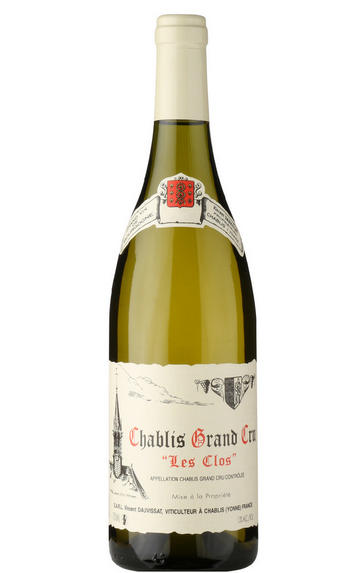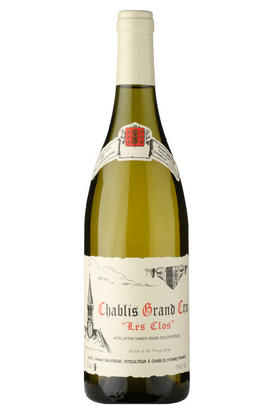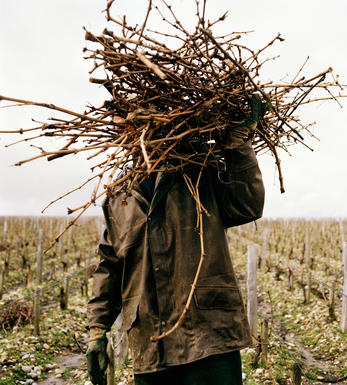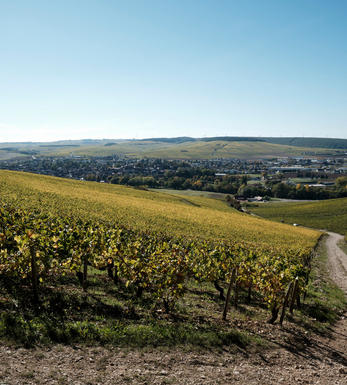
2017 Chablis, Les Clos, Grand Cru, Vincent Dauvissat, Burgundy

Critics reviews
Pale with the faintest green tint, less welcoming than Preuses at this stage but still with great nobility. Much fresher fruit, green and tangerine, but still ripe, youthful exuberance, cutting edge. It's the wealth through the middle which counts.
Jasper Morris MW, InsideBurgundy.com (May 2018)
From 7 different parcels of 50+ year old vines that total 1.7 ha.
The nose makes clear that it could be from nowhere else but Chablis with its equally elegant and cool array of iodine, oyster shell, mineral reduction and sea breeze whiffs that are punctuated by floral, citrus and pear scents. The ultra-sleek and almost painfully intense mineral-inflected big-bodied flavours possess first-rate power and punch before culminating in a sappy, hugely long and super-saline finish. Magnificent but note well that at least some patience is required.
Drink from 2032 onward
Allen Meadows, Burghound.com (October 2019)
The 2017 Chablis Les Clos Grand Cru is perhaps more closed on the nose compared to the Les Preuses, at least on the day of my visit. It unfurls slowly with citrus lemon, flint and light undergrowth aromas. The palate is much more expressive with refined citrus fruit laced with spice, very harmonious with a palpable sense of energy towards the persistent finish. This might take longer to come around than the Les Preuses but it will be worth the wait. Pure class.
Drink 2027 - 2050
Neal Martin, Vinous.com (August 2018)
The 2017 Chablis Les Clos Grand Cru is another positively dazzling wine in Vincent Dauvissat's cellar. Powerful and deep, with seemingly endless layers of flavour that develop in the glass, the Clos is utterly mesmerizing from the first taste. Lemon confit, exotic white flowers and crushed rocks are some of the notes that develop. More than anything else, the Clos is a wine of total seduction and rapturous beauty. Don't miss it.
I had heard rumours about Vincent Dauvissat's impending retirement, but I have to say I saw little evidence of that on my most recent visit. More importantly, the wines are just off the charts. When all is said and done, Dauvissat made a number of truly epic wines in 2017, culminating with Clos and Preuses, both of which are insanely beautiful. To me, Dauvissat embodies the style of Chablis today. The wines can be quite rich and potent, yet they retain tremendous site expression and plenty of sizzle. Readers will find all of those qualities in the 2017s. Dauvissat compares 2018 to 2009 in terms of balance. As it turns out, I drank a bottle of the 2009 Chablis a few days before I visited. I found it young and not quite ready to offer its best drinking.
Drink 2025 - 2037
Antonio Galloni, Vinous.com (January 2020)
More muscular and enveloping than the Preuses, Dauvissat's 2017 Chablis Grand Cru Les Clos unfurls in the glass with aromas of ripe lemons, confit citrus, pastry cream and dried white flowers. On the palate, it's full-bodied, satiny and multidimensional, with a rich, structured but incisive profile and a long, chalky finish. If Les Preuses is the more intellectual of the two grand cru bottlings, Les Clos is the more direct and easy to understand.
Drink 2027 - 2055
William Kelley, Wine Advocate (August 2019)
This has such completeness and a very expressive long powerful palate with a wealth of ripe lemons, grapefruit, peaches and nectarines. So much in this glass of wine! The length, power, finesse and seamlessness are staggering. Such intense fruit with flesh and depth. Super long, intense and compelling. Light but intense.
James Suckling, JamesSuckling.com (August 2018)
Seven parcels - four above the path and three below it - go into this classic expression of Les Clos, now, alas, reduced in volume because of replanting and inheritance. Broad, honeyed and powerful, it has a sappy, stony acidity. It makes a nice pair with Les Preuses.
Drink 2022 - 2032
Tim Atkin MW, Decanter.com (July 2018)
About this WINE

Vincent Dauvissat
Domaine René et Vincent Dauvissat is arguably the finest domaine in Chablis and its place at the top of the Chablis hierarchy is rivalled only by Domaine Raveneau. Robert Dauvissat established it in the 1920s, although its reputation was established by his son René who managed the domaine for many years. Vincent started working with his father in 1976 and has run the domaine for the last 5 years.
There are 11 hectares of vineyards split between two Grands Crus and three Premiers Crus sites. Yields are tightly restricted and in the winery the vinification and maturation is painstaking and meticulous. The grapes are fermented in enamel tanks and the juice remains in tank for a year before being transferred to oak barrels, a small percentage of which are new. The wines have a purity and intensity of flavour seldom encountered in Chablis today.

Chablis Grand Cru
These are the biggest, richest and most complex Chablis, which cover a total of 100 hectares – just two percent of the appellation. At their best, they can match the quality of a Grand Cru Chardonnay from the Côte d’Or, yet often at half the price.
They may lack their southern neighbour’s opulence, but they share the latter’s intensity and have a nervy minerality that set them apart. Inexpressive in youth, they should ideally be aged for 10 years, and can mature for up to 30 years. Styles vary according to producer, with some maturing and fermenting in stainless steel while others use barrels, sometimes even new oak.
All seven Grands Crus are grouped together on a single south-west-facing hill just north of the town. La Moutonne is an unofficial eighth Grand Cru straddling Les Preuses and Vaudésir, and is allowed to use the name on its label. The rich, fine Les Clos and the intense, spicy Vaudésir are generally considered to be the best, and are certainly the most full-bodied.
The delicate Blanchots and the racy Grenouilles are the most aromatic, while Les Preuses is full, complex and the least minerally. Valmur is fragrant, rich and smooth while La Moutonne is elegant and incredibly expressive. The vibrant Bougros tends to be the junior member of the group, but in the right hands can also be very good.
Recommended producers: Billaud-Simon, Duplessis, J.-P. & Benoit Droin.

Chardonnay
Chardonnay is often seen as the king of white wine grapes and one of the most widely planted in the world It is suited to a wide variety of soils, though it excels in soils with a high limestone content as found in Champagne, Chablis, and the Côte D`Or.
Burgundy is Chardonnay's spiritual home and the best White Burgundies are dry, rich, honeyed wines with marvellous poise, elegance and balance. They are unquestionably the finest dry white wines in the world. Chardonnay plays a crucial role in the Champagne blend, providing structure and finesse, and is the sole grape in Blanc de Blancs.
It is quantitatively important in California and Australia, is widely planted in Chile and South Africa, and is the second most widely planted grape in New Zealand. In warm climates Chardonnay has a tendency to develop very high sugar levels during the final stages of ripening and this can occur at the expense of acidity. Late picking is a common problem and can result in blowsy and flabby wines that lack structure and definition.
Recently in the New World, we have seen a move towards more elegant, better- balanced and less oak-driven Chardonnays, and this is to be welcomed.


Buying options
Add to wishlist
Description
From 7 different parcels of 50+ year old vines that total 1.7 ha.
The nose makes clear that it could be from nowhere else but Chablis with its equally elegant and cool array of iodine, oyster shell, mineral reduction and sea breeze whiffs that are punctuated by floral, citrus and pear scents. The ultra-sleek and almost painfully intense mineral-inflected big-bodied flavours possess first-rate power and punch before culminating in a sappy, hugely long and super-saline finish. Magnificent but note well that at least some patience is required.
Drink from 2032 onward
Allen Meadows, Burghound.com (October 2019)
wine at a glance
Delivery and quality guarantee